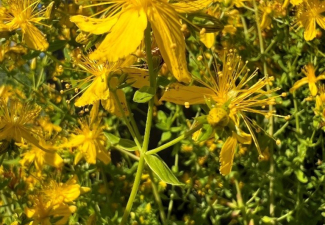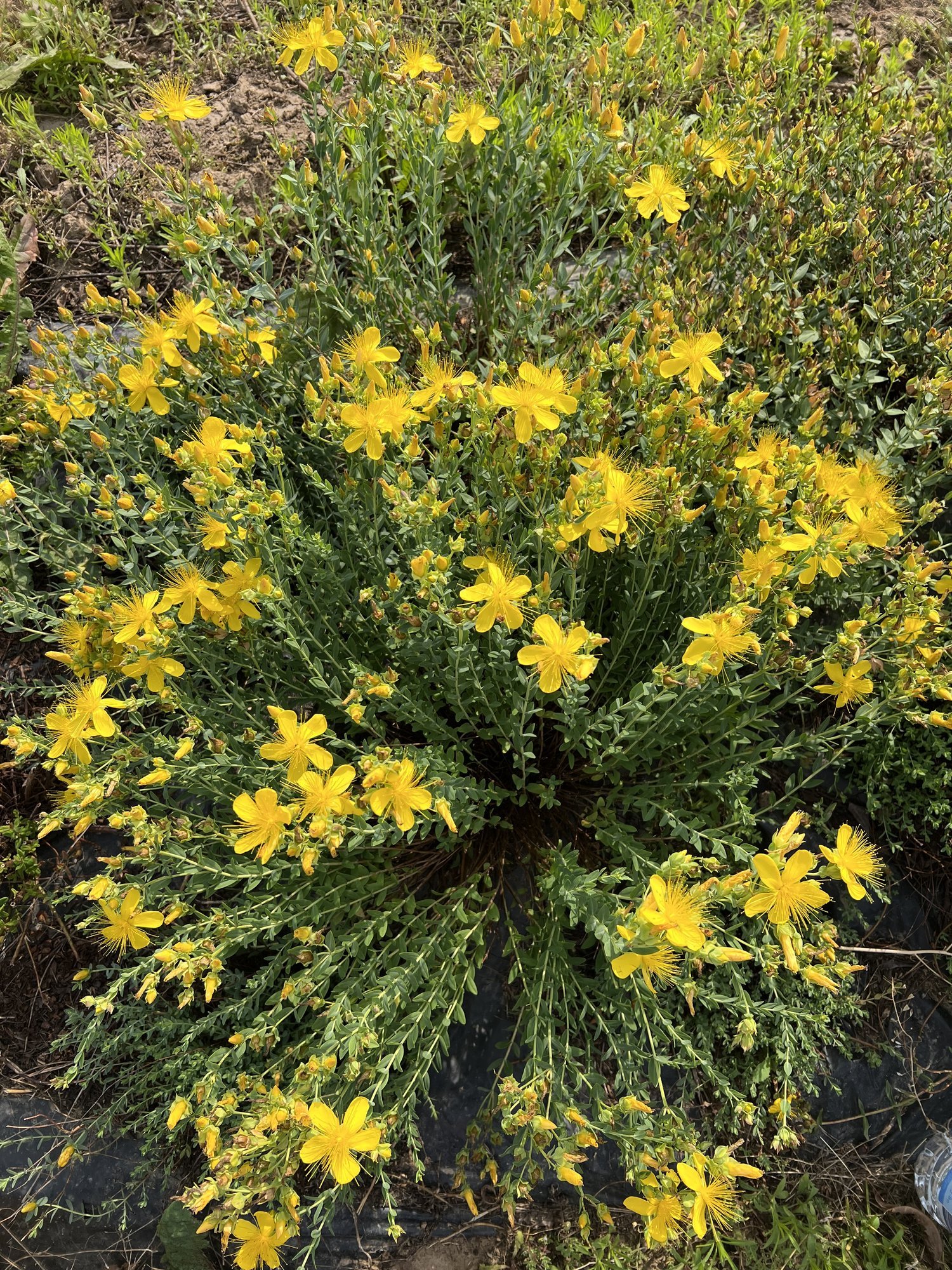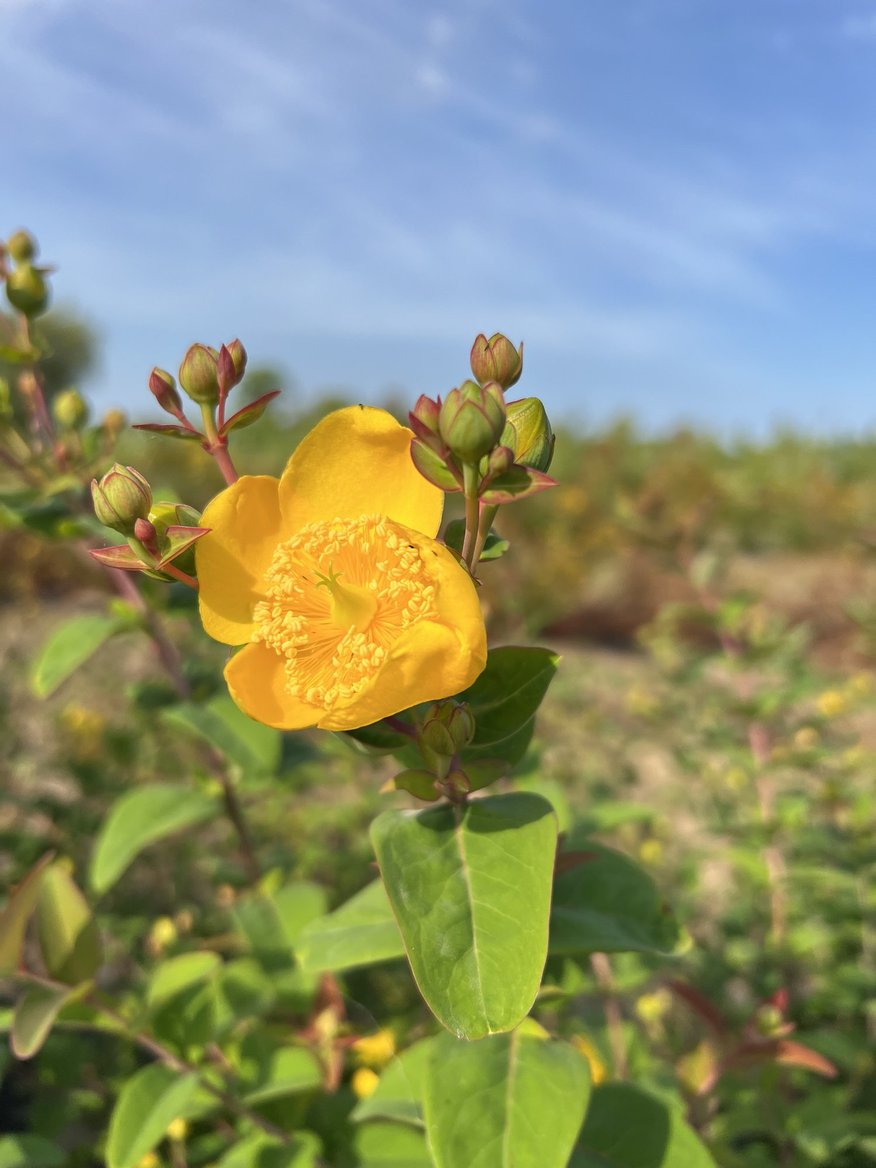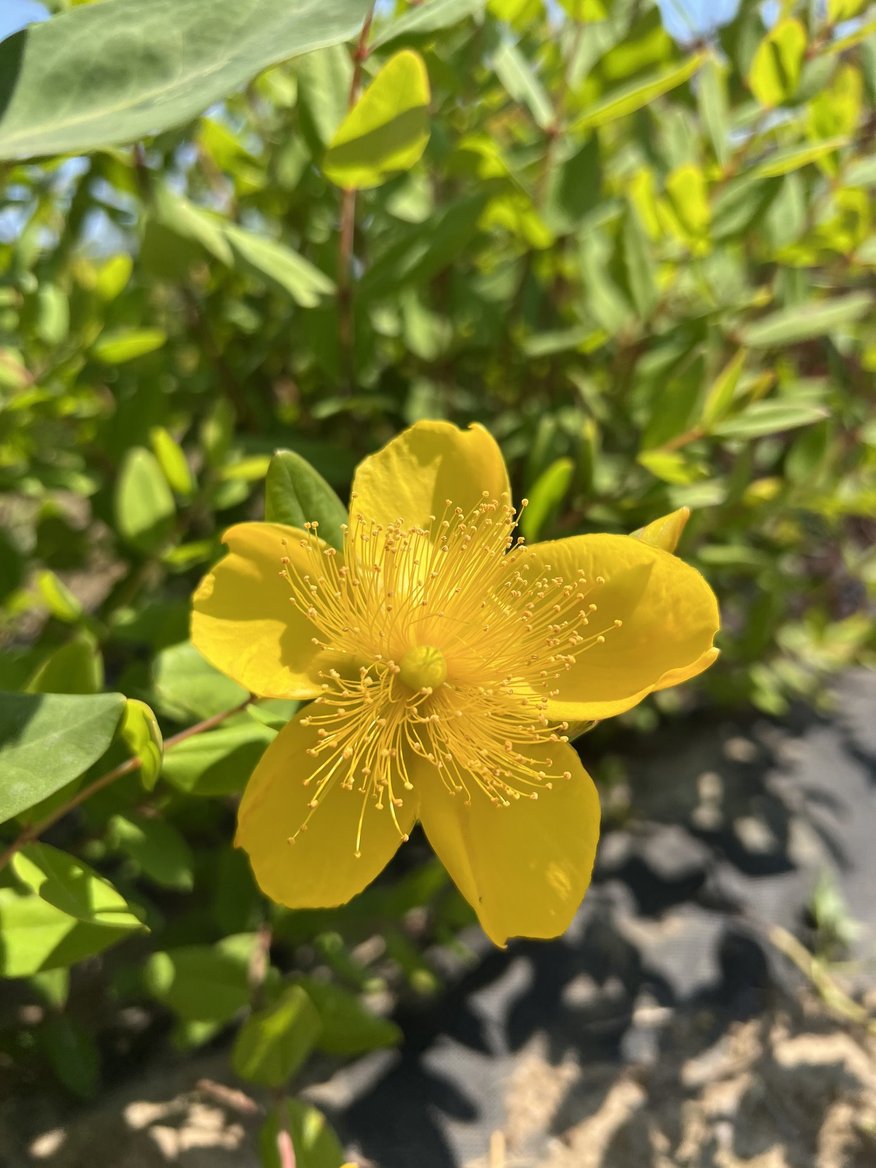From medicinal herb to beautiful ornamental shrub – The diverse charm of St.John`s wort

For the third and final year, the project “Genus Hypericum as a new valuable source of tocotrienols and tocochromanol-related molecules – from ornamental crop to industrial applications” has been implemented at the Institute of Horticulture (Project No.: lzp-2021/1-0651). Traditional St. John`s wort (Hypericum perforatum) (Fig.1, at right) is a medicinal herb that has been widely known and used around the world for centuries.
The wound-healing potential of St. John`s wort has been described in more than 2400 years ancient history. As science has progressed, St. John`s wort has been studied by researchers and proven to be an effective remedy for various urinary tract diseases, diarrhea and jaundice treatment, and no less important are its antidepressant properties.
Despite all these great properties of this medicinal plant, this genus has also attracted our attention with its diverse plant appearance, which can complement any garden with attention-grabbing shrubs and their flowers. Within the framework of the project, more than 50 different genotypes (seeds) arrived at the Institute of Horticulture from 125 botanical gardens and several partners from 29 countries. Several cultivated genotypes are showcasing their breathtaking blooms, each a vibrant splash of golden yellow. Let`s take a closer look at their captivating beauty!

Hypericum reptans (Fig.2, above) – this variety boasts blooms twice the size of H.perforatum, all on a petite 30 cm frame. Its tiny leaves add a touch of charm. Perfect for a flower bed, it continues to grace the garden with lush foliage even after flowering. This perennial and winter-hardy gem will bring joy for years to come.

Hypericum hookerianum (Fig.3, above) – shrub reaches an impressive height of 70-80 cm and stands out with its vibrant blooms measuring up to 4 cm in diameter. Its lush green leaves provide a striking contrast to the vibrant red stem. The leaves exude an enticing sweet-tart aroma. Despite its origins in East and Southeast Asia, this Hypericaceae family member has successfully overwintered in our garden each year, reaching its full bloom in mid-July.

Hypericum oblongifolium (Fig.4, above) – while this variety share a striking resemblance with H.hookerianum, subtle distinctions set them apart. H.oblongifolium exhibits a pronounced two-edged groove along its stems, reminiscent of the familiar H.perforatum. And then there are the flowers, reaching a remarkable diameter of up to 9 cm. This magnificent plant graces the garden with its blooms from July through August.

Hypericum hircinum (Fig.5, above) – these robust shrubs can grow up to 1.5 meters tall and is perennial. Sometimes they are also called goat`s rue, due to their characteristic aroma. This plant attracts attention with its golden yellow flowers, which have notably long and prominent stamens.
Ieva Valāte and Elise Sipeniece, Institute of Horticulture
References
- Butterweck et al., 2000. https://doi.org/10.1055/s-2000-11119
- Cervo et al., 2002. https://doi.org/10.1007/s00213-002-1229-5
- Kumar et al., 2000. http://nopr.niscpr.res.in/handle/123456789/24121
- Saddiqe et al., 2010. https://doi.org/10.1016/j.jep.2010.07.034
